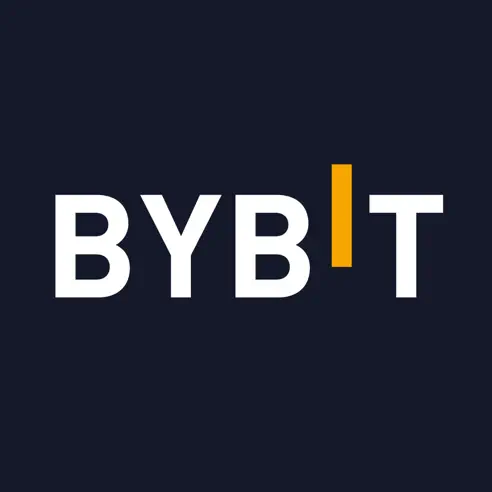D
ecentralized infrastructure is set to transform how we access and utilize physical resources. This new model is called DePIN – Decentralized Physical Infrastructure Networks. By leveraging blockchain technology and token rewards, DePIN provides an innovative way to crowdsource physical assets and connectivity.
From computing power to network access, DePIN has the potential to disrupt a variety of industries. This article will dive into what exactly DePIN is, how it works, the types of networks it enables, and the benefits it can offer.

What Is DePIN?
DePIN, which stands for Decentralized Physical Infrastructure Networks, utilizes blockchain technology to incentivize people to share their resources.
Rather than letting devices like WiFi hotspots, solar panels, or electric vehicle charging ports sit idle, DePIN encourages individuals to open them up for public use. In return, they earn DePIN tokens as compensation. This fosters a network of shared infrastructure that benefits communities. Where you may lack connectivity or a power boost on your own, suddenly solutions abound through neighbors’ contributions.
DePIN is an acronym that breaks down as follows:
- Decentralized – DePIN networks are decentralized, meaning there is no central authority controlling them. Instead, they are governed by participants.
- Physical – DePIN focuses on providing access to real-world, physical resources like bandwidth, storage space, electric vehicle charging stations, etc.
- Infrastructure – The physical assets that allow services like computing and connectivity to be delivered.
- Networks – Participants pool their infrastructure resources into interconnected networks.
By combining all these components, DePIN establishes crowdsourced, decentralized networks of physical infrastructure open to all.
How Does DePIN Work?
The DePIN model uses blockchain and token rewards to incentivize individuals to provide their infrastructure resources to the network. For example, someone may contribute storage space on their computer or bandwidth from their wireless router. Others may provide access to EV charging stations or telecom equipment.
These contributors are paid in tokens native to that DePIN ecosystem. The blockchain serves as a ledger, recording transactions and distributing rewards. Smart contracts automate these processes, ensuring rules are followed and participants are paid for their services.
Unlike traditional centralized infrastructure, DePIN networks are governed by their participants, not a single controlling entity. By providing infrastructure, contributors also have a say in network decisions.

Types of DePIN Networks
DePINs fall into two main categories:
- Physical Resource Networks (PRNs) focus on location-dependent, real-world infrastructure. Examples include mobility, energy, and connectivity DePINs. PRNs may reward EV owners for providing charging access or compensate routers for supplying bandwidth.
- Digital Resource Networks (DRNs) pool fungible digital resources like storage, computing power, and data transmission capacity. Filecoin, for instance, lets participants earn tokens by providing unused hard drive space. Render Network does the same for graphics processing power.
Both types unlock new revenue streams for contributors while providing users with competitive options for infrastructure needs.
The Benefits of DePIN
DePIN offers advantages for infrastructure providers, consumers, and industries as a whole:
- Providers – Earn passive income by sharing idle resources. Participants also gain voting rights by owning network tokens.
- Consumers – Access infrastructure at lower costs than current centralized providers. Experience faster deployment of new infrastructure.
- Industries – New competition spurs innovation. DePINs scale quickly by leveraging crowdsourcing. Less waste of resources.
DePIN frees individuals to become micro-providers. At the same time, it checks the centralized control of infrastructure monopolies.

Current DePIN Projects
Several promising DePIN networks across sectors like computing, connectivity, mobility, and energy are already operational:
- Filecoin – Decentralized cloud storage network where participants earn tokens for leasing out spare hard drive space and retrieving files for users. Amassed over 7 exabytes of storage by 2021.
- Helium – Enables owners to earn tokens by sharing wireless coverage from their home routers to build out a crowdsourced network. Reached nearly 1 million active hotspots globally as of 2022.
- Render Network – Allows GPU owners to monetize idle graphics card capacity by performing rendering tasks on behalf of users. Processes over 180 million render jobs per month.
- Theta Network – Uses consumer bandwidth to facilitate decentralized video streaming, improving delivery and reducing costs. Streamed over 50 million hours of video in 2021.
- PlanetWatch – Leverages a distributed sensor network to crowdsource hyperlocal air quality data and provide environmental monitoring. Active in over 50 countries currently.
The Future of DePIN
DePIN has only just begun transforming how we produce, access, and pay for real-world infrastructure. Over the coming years, look for exponential growth in DePIN networks across industries like connectivity, mobility, and energy. Seamless integration with Internet of Things networks will further expand DePIN’s reach.
Governments are also recognizing the critical role DePIN can play in modern infrastructure development. Some jurisdictions have already begun creating regulatory frameworks to support DePIN innovation.
Many experts predict 2024 could be a breakout year for DePIN storage solutions. Networks like Filecoin, Arweave, and others may finally gain meaningful traction and adoption.
With the volume of data being created growing rapidly thanks to AI, decentralized and censorship-resistant storage has an obvious appeal. Whether the technology and incentive models have matured enough for mainstream use remains to be seen. But some protocols like Filecoin already host an impressive amount of stored data.
DePIN presents a monumental shift in how we build infrastructure networks and deliver the physical resources powering our economies. By tapping into decentralized participation, DePIN can rapidly scale where legacy models stall. It also offers new revenue streams and governance rights to contributors. As Web3 reshapes industries, DePIN is poised to provide the physical foundation for this next-generation internet.









